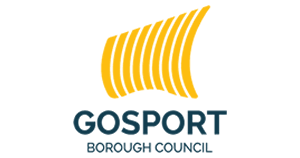Biodiversity Net Gain
This webpage will be subject to regular review and updating as new guidance and best practice emerges.
Overview
The 2021 Environment Act introduced the requirement for developments to provide a minimum 10% biodiversity net gain (BNG). This will be mandatory for major planning applications from 12 February 2024 and for small-sites from 2 April 2024 (except the below exemptions). The delivery of BNG must be calculated using the latest biodiversity metric (as published by Government) and should be undertaken by a competent person, such as a qualified ecologist or landscape professional.
The delivery of BNG should follow the 'biodiversity hierarchy' and primarily be provided onsite. If this is not possible it can be provided offsite (preferably within the Borough). As a last resort, statutory biodiversity credits can be purchased. In all instances, maintenance will need to be secured for a minimum of 30 years.
Policy LP41 of the Borough's adopted local plan supports the delivery of a net gain in onsite biodiversity. This applies to all developments, including those that are exempt from BNG.
Exempt developments
There are some exemptions to the BNG requirement, listed below. Where applicants consider their development exempt, they must set out in a statement why they think this is the case. This statement can be set out within the planning application form or a separate document.
- Householder applications
- Permitted development rights
- De minimis development that does not impact a priority habitat and impacts less than 25 sqm of habitat, or 5 metres of linear habitats such as hedgerows.
- Self-build and custom build developments of no more than 9 dwellings, and on a site no larger than 0.5 hectares
- Urgent Crown development
- Development of a biodiversity gain site
As mentioned above, the Borough's local plan encourages a net gain in onsite biodiversity in all developments, including those that are exempt from BNG.
Submission requirements
Apart from exempt developments, all planning applications submitted to the Council after the listed dates will be required to deliver at least 10% BNG and must submit the following information as a minimum:
- a statement on whether the application would be subject to the biodiversity gain condition
- a survey of the site's pre-development habitats calculated using the latest biodiversity metric
- a scale plan showing the direction of north, onsite habitats and any irreplaceable habitats (Ancient woodland, Ancient and veteran trees, Blanket bog, Limestone pavements, Coastal sand dunes, Spartina saltmarsh swards, Mediterranean saltmarsh scrub, Lowland fens)
- confirmation if any onsite habitat has been 'degraded' by activities and evidence to support this.
- for major applications and those were BNG will be delivered onsite the submission of a draft Habitat Management and Monitoring Plan would be expected
- for applications providing offsite BNG the submission of a draft S106 head of terms or conservation covenant is expected along with the mitigation site's reference number from the approved BNG register
- a draft Biodiversity Gain Plan is strongly encouraged
The Council strongly encourages that Biodiversity Gain Plans are submitted with the planning application in order that biodiversity and any associated green infrastructure can be incorporated into the design of the development from the outset.
Where an applicant wishes to use an earlier date for calculating habitats, a statement will need to be submitted stating the proposed earlier date and the reasons for proposing that date.
Where it appears that habitats have been intentionally degraded in advance of a planning application, the Council may use an earlier date to calculate the BNG requirements of a site, including reverting to the baseline date of January 2020. The Council will make use of saved aerial photograph and other methods to inform its position.
The Council will enforce the BNG requirement through the imposition of a national pre-commencement planning condition that will require the submission and approval of a Biodiversity Gain Plan, and securing BNG through a planning condition, and/or a Section 106 agreement or a conservation covenant.
Biodiversity Gain Plans
A Biodiversity Gain Plan sets out how the minimum 10% BNG requirement will be achieved and must be submitted to and approved by the LPA before development starts on site. A template Biodiversity Gain Plan can be found here, the use of which is strongly encouraged to ensure that the necessary information and detail is provided. A Biodiversity Gain Plan must include the following information:
- How the development will minimise adverse effects on onsite habitat and any other habitats
- the onsite biodiversity units pre and post development, any offsite biodiversity units (including a mitigation site's reference number from the approved BNG register) and any purchased statutory biodiversity credits with proof of purchase
- how the biodiversity hierarchy has been followed and how the 10% net gain will be achieved
Additional documents that may need to be submitted are:
- Section 106 agreement or conservation covenant
- habitat compensation plan (if the biodiversity metric advises the need to)
- Habitat Management and Monitoring Plan, if delivery will be onsite (a template can be found here)
Delivery
Once a Biodiversity Gain Plan has been approved by the Council (and any other matters resolved), the developer can start work on the development and the delivery the BNG. The Council will monitor the delivery and maintenance of BNG after a development is complete and can take formal enforcement action if BNG requirements are not met.
Links
Further guidance can be found at:
Draft biodiversity net gain planning practice guidance




